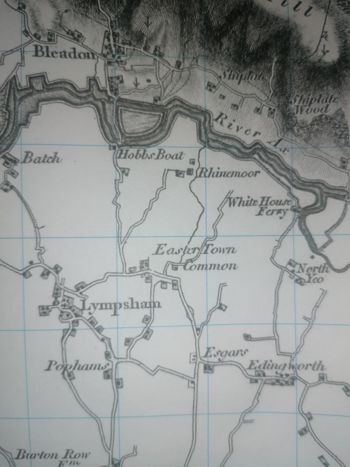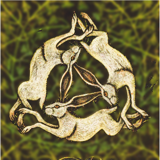
Historic Eastertown.
The Sedgemoor, for which the district is named, is a formerly marshy tract drained and protected from the sea by many dykes. Our nearby River Axe rises from the ground at Wookey Hole in the north of the county. Flowing through the beautiful countryside, the river meanders for approximately 22 miles before reaching the Bristol Channel near the town of Uphill. The river passes through the settlement of Lower Weare and on to the south of Loxton. From this point it reaches the coast at Weston Bay. Small tributaries such as the Wrentmoor Rhyne were at one time tidal, until the sluice gates at Hobbs Boat and more recent barriers further downstream, reduced the inward flows of sea water.
From mediaeval times up to the second half of the twentieth century there was a prolonged struggle by landowners and farmers to manage flood water, reclaim land and improve pastures. The drainage changed marshy areas and the local geography with consequences for the human population and wildlife. Over the centuries there were inevitably winners and losers.
Between 1760 and 1870, about 7 million acres (about one sixth the area of England) were changed, by some 4,000 acts of parliament, from common land to enclosed land. In many parts of England and Scotland, commoners lost not only their open space and their natural environment (the poems of John Clare remind us how significant that loss was); many lost one of their principal means of making a living.
Much past drainage was carried out by the Church: either by Glastonbury Abbey or the Dean of Wells and Bishop of Bath and Wells. By the 18th and early 19th centuries the land in Sedgemoor evolved into today’s network of rhynes, ditches and drains. It was expected that local residents would give up some of their time each year for the mutual benefits of maintaining the flood defences.
We recently came across this map of our area that was printed in the 1800’s, which clearly indicates that part of the land around the village of Lympsham was referred to as Eastertown Common. It would be of great interest to know more about how this changed over the last 200 years. We know that Braggs Directory in 1840 refers to an “Easterton” fair being held somewhere in the vicinity on the 25th April that year.
Colin's Corner
Colin's a bit under the weather at the moment.
Article coming soon!

